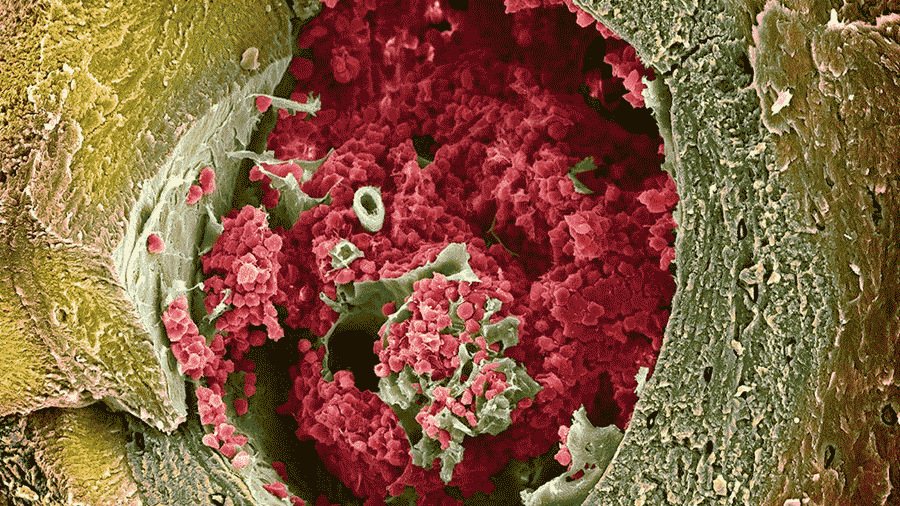Source: NewScientist, by Helen Thomson. DENNIS KUNKEL MICROSCOPY/SPL

- Is the initial reservoir of pluripotent stem cells.
- It is active only in the last months of fetal stage.
- All hematopoietic cells inclusive lymphocytes grow here.
- Is major organ for B cell maturation.
- All lymphoid /precursor cells alternately migrate to Thymus to become T cell.
Red bone marrow is the blood-forming part of the bone marrow. In adults, red bone marrow located on spongy substances of flat bones, in the epiphyses of the tubular bones. In total, make up about 4–5% of total body weight. Red bone marrow has a dark red color and a semi-liquid consistency. It contains hematopoietic stem cells (CSC) and differentiated hematopoietic cells of the erythroid, granulocyte and megakaryocytic series, as well as the precursors of B and T lymphocytes.
The basis of the red bone marrow is reticular tissue, as well as neural arterioles, sinuses, capillaries, fat cells, macrophages, stem cells, myeloid cells at different stages of development, megakaryocytes – giant bone marrow cells, B lymphocytes and precursors of T lymphocytes. The bone marrow stroma is reticular connective tissue forming the microenvironment for hematopoietic cells. Currently, the elements of the microenvironment also include osteogenic, fat, adventitial, endothelial cells and macrophages.
From the bone marrow stem cells enter the blood. This process is controlled by the hypothalamic-pituitary-adrenal system. Reducing the production of adrenocorticotropic hormone (ACTH) leads to an increased rate of migration of stem cells into the blood. On the contrary, the increased production of this hormone leads to the suppression of the release of stem cells from the bone marrow.
Red bone performs two main functions:
- Formation and differentiation of all blood cells based on a self-sustaining stem cell population
- Antigen-independent differentiation of B-lymphocytes. The source of development is the stem cell.
In addition to the function of blood formation, the red bone marrow also performs the function of immunogenesis, being a central organ of immunogenesis. Antigen-independent B-lymphocyte proliferation occurs in the red bone marrow. During this process, B lymphocytes acquire immunoglobulin receptors for different antigens on their surface. And in this state, they are sent to antigen-dependent zones of peripheral blood-forming organs.

